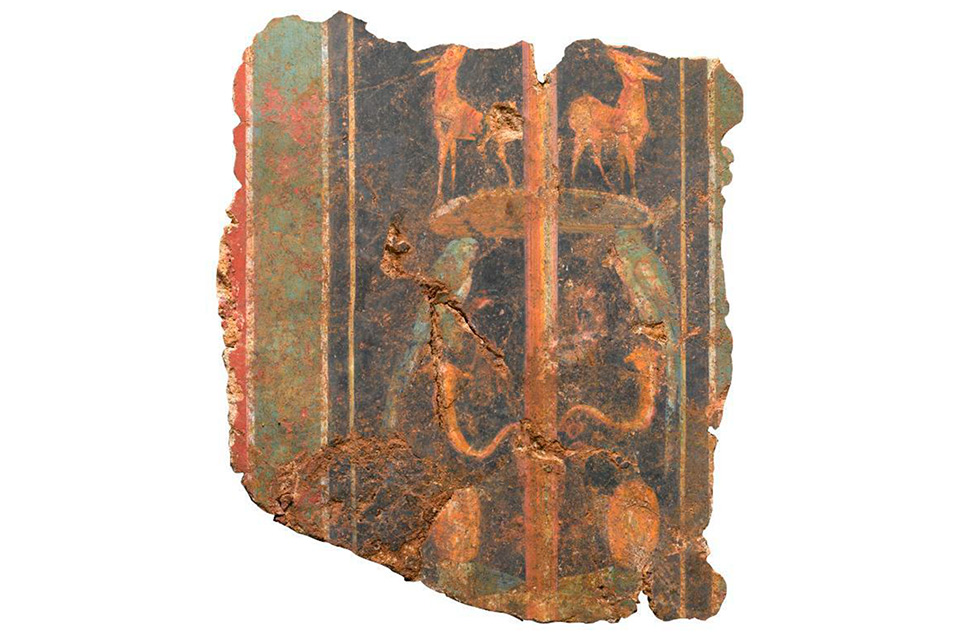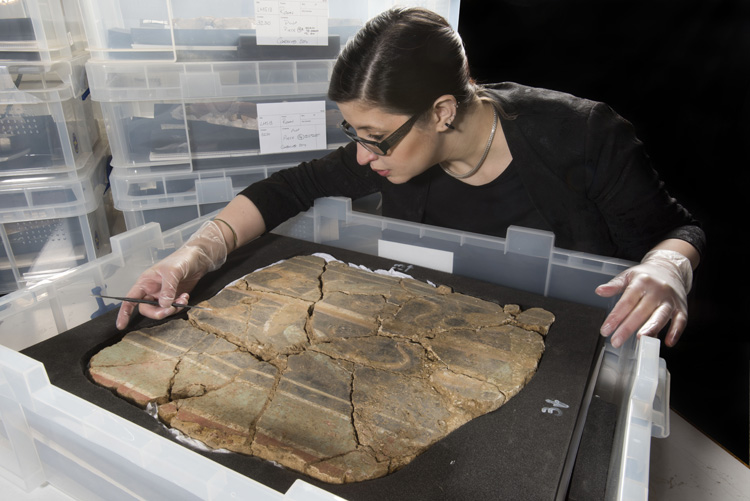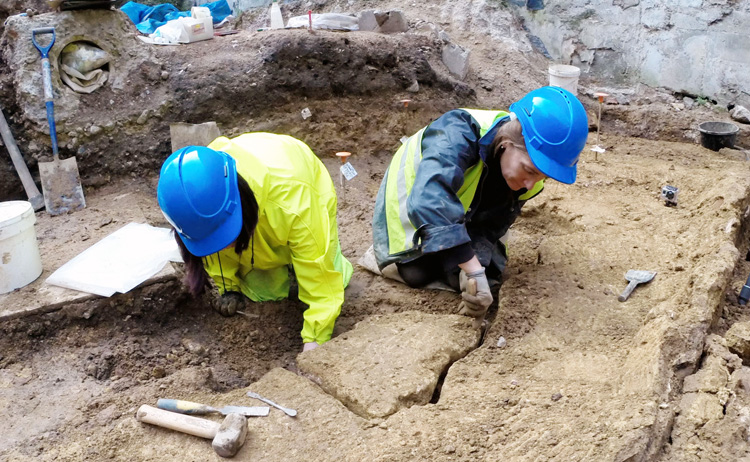“Rare 1st Century Roman Fresco Unearthed in London Construction Site”
A remarkable discovery by the Museum of London Archaeology (MOLA) has brought to light an intricately decorated Roman wall painting dating back to the 1st century AD. Unearthed nearly 20 feet below street level during construction preparations, the collapsed fresco is a rare find, having been toppled by ancient Romans in 100 AD to make room for the second Forum Basilica.
This is its first time being seen in “nearly 2,000 years.”

The multicolored masterpiece, featuring a detailed pattern of vines, trees, deer, and birds, was carefully excavated in 16 sections by MOLA archaeologists. The conservation team worked against time to lift the fragile fresco along with the soil beneath, ensuring its preservation.
The wall was reportedly knocked over by the ancient Romans in 100 AD to make way for the second Forum Basilica, an important civic building and the largest ever built by the Romans north of the Alps.

MOLA archaeological conservator Luisa Duarte examines a section of decorated Roman wall the 1st century AD discovered in London.

Conservators from MOLA remove a section of decorated Roman wall from the 1st century AD from an archaeological site in London.
MOLA conservator Liz Goodman expressed the challenges and rewards of the project, stating, ‘It was a joy to uncover the decorative plaster that hadn’t been seen for nearly 2,000 years.’ This remarkable piece adds another layer to London’s rich history as part of the ancient Roman Empire.
Soure: Artnet





